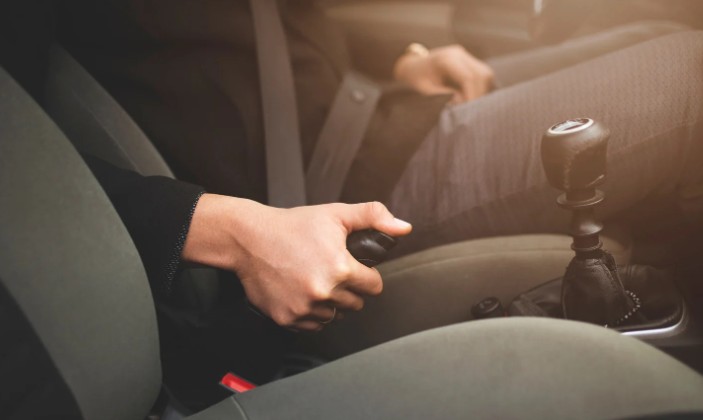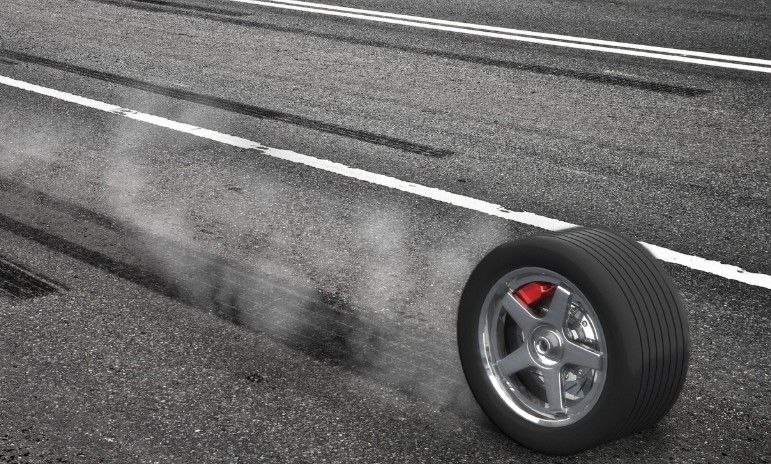When you’re driving in the UK, emergencies can happen without warning—someone pulls out suddenly, a child runs into the road, or traffic ahead stops abruptly.
In these situations, knowing how should you use anti-lock brakes when you need to stop in an emergency can make all the difference between a close call and a serious accident.
This guide walks you through exactly what you need to do—and avoid—when using ABS in real-world driving conditions.
What Is an Anti-Lock Braking System (ABS)?
How Does ABS Work in Modern UK Vehicles?
ABS is a safety system fitted in most modern UK cars that prevents your wheels from locking up when you brake hard.
If the wheels lock, your tyres lose traction, causing skidding and a loss of steering control. ABS avoids this by rapidly pulsing the brakes, allowing you to keep steering while slowing down.
Basically, ABS helps you brake hard without losing control.
Why Is ABS Important in Emergency Situations?
In emergencies, reaction time is critical. You may need to stop quickly while still steering to avoid an obstacle.
Without ABS, this is much harder to achieve. With ABS, your car can maintain traction and control, even during sudden, forceful braking.
When Should You Use Anti-Lock Brakes?
Recognising Emergency Situations on the Road
ABS is planned for unexpected, high-pressure moments, like:
- A car suddenly braking in front of you
- Someone stepping onto the road
- An animal running across your path
- Icy or wet roads when you need to stop quickly
You don’t need to activate ABS manually—it automatically kicks in when it detects sudden or heavy braking.

Can You Use ABS in Wet or Icy Conditions?
Yes, and in fact, it’s especially helpful in slippery conditions. However, it’s not magic.
ABS improves control, but your stopping distance can still increase on wet, snowy, or icy roads. That’s why you should always drive more cautiously in poor weather.
How Should You Use Anti-Lock Brakes in an Emergency?
When you’re faced with an emergency, here’s how to handle braking with ABS:
Step-by-Step Guide to Using ABS Correctly
1. Keep firm, steady pressure on the brake pedal
As soon as you realise you need to stop urgently, press the brake pedal firmly and fully. Don’t be afraid to push hard—ABS is designed for exactly this.
2. Don’t pump the brakes
Many drivers still believe they should pump the brakes during an emergency stop. With ABS, you must not pump the brakes. Let the system do its job. Pumping the brakes can actually reduce effectiveness.
3. Maintain steering control
One of the best things about ABS is that you can steer while braking. If you need to swerve around an obstacle, you’ll still have control of the steering wheel.
What Does ABS Feel Like When It Activates?
You’ll likely feel a vibrating or pulsing sensation in the brake pedal and hear a slight grinding sound. Don’t panic—this is normal. It means the system is actively working to prevent your wheels from locking.
What Mistakes Should You Avoid When Braking with ABS?
Even with modern safety systems, your actions matter. Here are common mistakes to avoid:
Why You Shouldn’t Pump the Brakes with ABS
As mentioned, pumping the brakes used to be good advice—before ABS existed. With ABS, pumping only confuses the system and increases your stopping distance.
Common Driver Misconceptions
- “ABS helps me stop faster in all conditions.”
Not always. ABS doesn’t necessarily reduce stopping distance on all surfaces (like loose gravel or snow). Its main benefit is steering control.
- “I don’t need to change my driving in bad weather because I have ABS.”
ABS is an aid, not a shield. You still need to drive with caution, especially on slippery roads.
ABS vs Traditional Braking: What’s the Difference?
Understanding how braking techniques change with ABS can help you adapt during emergencies.

How Braking Techniques Differ With and Without ABS
- With ABS: Brake firmly and steer as needed. No pumping.
- Without ABS: You’ll need to manually pump the brakes to prevent wheel lock-up and maintain some control.
Vehicles Without ABS – What Should You Do?
If you’re driving an older vehicle without ABS:
- Apply the brakes quickly but not too harshly
- If the wheels lock up, ease off and reapply
- Try to steer smoothly to avoid skidding
Tips for Staying Safe During Emergency Stops
How to Practise Braking Safely
While you can’t plan for an emergency, you can practise your reaction. Try this:
- In a safe, open area (like an empty car park), try firm braking to feel how your car reacts.
- If your car has ABS, get used to the vibration and sound during hard braking.
Driving Test Tips: Emergency Stop Manoeuvre in the UK
If you’re preparing for your driving test, you may be asked to perform an emergency stop. Here’s how to handle it:
- Respond quickly when prompted
- Press the brake and clutch down firmly together
- Keep both hands on the wheel to maintain control
- Don’t pump the brakes if your car has ABS

ABS Emergency Braking Comparison Table
| Feature | With ABS | Without ABS |
| Braking technique | Firm and steady pressure | Pump brakes manually |
| Steering control maintained? | Yes | No |
| Suitable for icy roads? | Yes, but with care | No |
| Skid risk | Low | High |
| Typical in modern UK cars? | Yes | Rare |
Conclusion: Using ABS Confidently in Emergencies
Learning how to use anti-lock brakes when you need to stop in an emergency can make a critical difference on the road. Just remember:
- Brake firmly and don’t let go
- Do not pump the brakes
- Steer smoothly to avoid obstacles
With a bit of understanding and practice, you can trust your car’s ABS to help keep you safe—whether you’re driving on a rainy motorway or reacting to an unexpected hazard.
Related Article: Why Should You Allow Extra Room While Overtaking a Motorcyclist on a Windy Day?
Frequently Asked Questions On How Should You Use Anti-Lock Brakes When You Need to Stop in an Emergency?
1. Should you pump the brakes with ABS?
No. ABS does the pulsing for you. Just press firmly and hold.
2. What should you do if the ABS warning light comes on?
If the ABS warning light stays on, it means the system is disabled. Your brakes will still work, but you won’t have anti-lock protection. Get it checked by a mechanic as soon as possible.
3. Does ABS reduce stopping distance?
Not always. ABS mainly improves steering control, but it can slightly reduce or increase stopping distance depending on road conditions.
4. How do I know if ABS is working?
During emergency braking, you’ll feel a rapid pulsing or vibration through the brake pedal—that’s ABS activating.

Leave a Reply